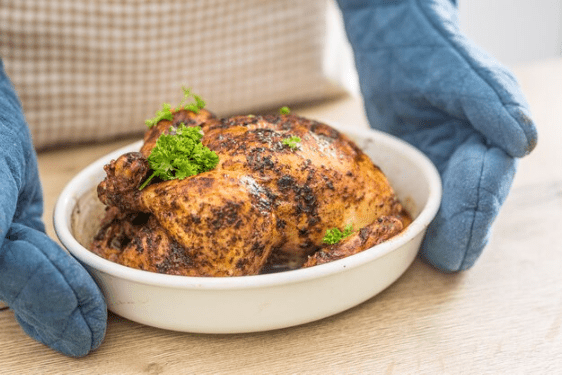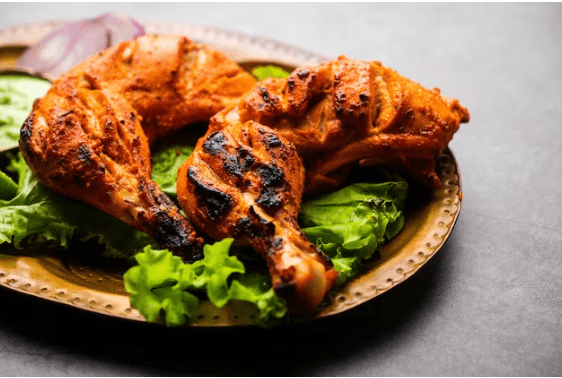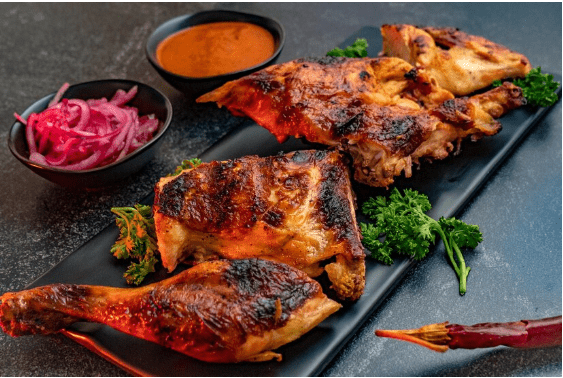Chicken is a staple in many cuisines worldwide, but it’s often surrounded by questions of food safety—particularly when it comes to reheating. With over 9 billion chickens consumed in the U.S. each year, it’s no surprise efficiency in reheating poultry has become a regular query in the kitchen.
Navigating food safety regulations is paramount, ensuring that every dish, including reheated chicken, is both delicious and safe to eat. This comprehensive guide dives into the essential practices for confidently reheating chicken at home. From understanding the risks to mastering the techniques, we’ll explore the why, the how, and the what-not-to-dos of this kitchen routine.
Understanding Chicken Safety
The Consequences of Undercooked Chicken
Consuming undercooked chicken is a significant risk for foodborne illnesses, most commonly caused by bacteria such as salmonella and campylobacter. Symptoms usually include stomach cramps, nausea, and vomiting, often lasting for several days. High-risk populations, including the elderly, young children, and individuals with compromised immune systems, are particularly susceptible to severe illness or complications.
To avoid these issues, it’s crucial to cook chicken to an internal temperature of at least 165°F (74°C), as recommended by the USDA. However, what about reheating chicken? Is it as straightforward as sticking it in the microwave?
Reheating Chicken: The Right Way
Best Practices for Reheating Chicken
Reheating chicken can be done safely and deliciously if you follow a few best practices. First and foremost, make sure to reheat your chicken within two hours of taking it out of the refrigerator; do not leave it at room temperature for longer, as this is when bacteria start to increase. When you’re ready to reheat, heat the chicken to an internal temperature of 165°F (74°C) to ensure it’s safe to eat.
Use a Food Thermometer
The only way to guarantee that your chicken is safe to eat is to check its internal temperature. Invest in a good food thermometer and use it each time you reheat any poultry dish.
Don’t Overheat
While it’s essential to reach the safe 165°F (74°C) temperature, you’ll want to avoid overheating your chicken, as this can cause the meat to become dry and less palatable.
Cover the Chicken
When reheating chicken, covering it helps to retain moisture and protects the meat from drying out. This step can significantly improve the taste and texture of your reheated dish.
Reheating Methods
There are several methods to reheat chicken, with the most common being the microwave, oven, and stovetop. Read this: Guidelines for reheating chicken.

Microwave Reheating
The microwave is fast, but it can be uneven, resulting in hot and cold spots. To mitigate this, stir the chicken halfway through and let it stand for a couple of minutes afterwards to allow the heat to distribute evenly.
Oven Reheating
The oven is slower but more consistent. Preheat your oven to 325°F (163°C), place the chicken in an oven-safe dish, and reheat until the internal temperature reaches 165°F (74°C).
Stovetop Reheating
For the stovetop method, place the chicken in a pan and reheat it over medium heat, ensuring that it’s heated through and the internal temperature reaches 165°F (74°C).
Safe Handling
When reheating chicken, it’s also essential to handle it safely. Wash your hands before and after handling chicken, and use separate chopping boards and utensils for raw and cooked chicken to prevent cross-contamination.
Safety Considerations
Proper Storage Protocol
The key to safely reheating chicken is proper storage. Store cooked chicken in airtight containers or resealable bags and place it in the refrigerator within an hour of cooking. Label the containers with the date so you know how long they’ve been in the fridge.
Reheating Time Limits
Leave cooked chicken in the refrigerator for up to four days before reheating. This timeframe limits the amount of time bacteria can grow on the food, minimizing the risk of illness.
Avoiding Cross-Contamination
Cross-contamination is a significant concern when handling chicken. To prevent it, always use separate surfaces, utensils, and containers for raw and cooked chicken. Clean your hands and kitchen surfaces thoroughly after dealing with raw poultry.
Common Myths and Misconceptions
The Cold Chicken Dilemma
Some believe that you can reheat chicken from the fridge without worrying about time limits, but this is a dangerous misconception. The two-hour window is crucial to reducing bacterial growth.
The “Twice is Nice” Myth
A popular notion is that cooking and reheating chicken can actually improve its flavour. While reheating can soften the textures of proteins, it’s not a practice to rely on for flavour enhancement. The risks associated with overcooking or underheating far outweigh any potential flavour benefits.
Microwaves Are Dangerous for Meat
While microwaves can have hot and cold spots, it’s a myth that they’re inherently unsafe for reheating chicken. Use a rotating plate or stir the chicken partway through to ensure even reheating.

Conclusion
Ultimately, reheating chicken is safe when done correctly. Ensure that the internal temperature reaches 165°F (74°C), handle the chicken properly to avoid cross-contamination, and store and reheat it within the suggested time limits. Safeguard your meals and follow these food safety guidelines to enjoy your chicken dishes with confidence.
Mastering the art of reheating chicken is not only about culinary convenience but about adopting a vigilant stance on food safety. By arming yourself with knowledge and adhering to these best practices, reheated poultry can be a highlight of your kitchen repertoire, not a potential hazard. So go ahead, reheat that chicken casserole, and savour every bite, secure in the knowledge that it’s both warm and worry-free.



